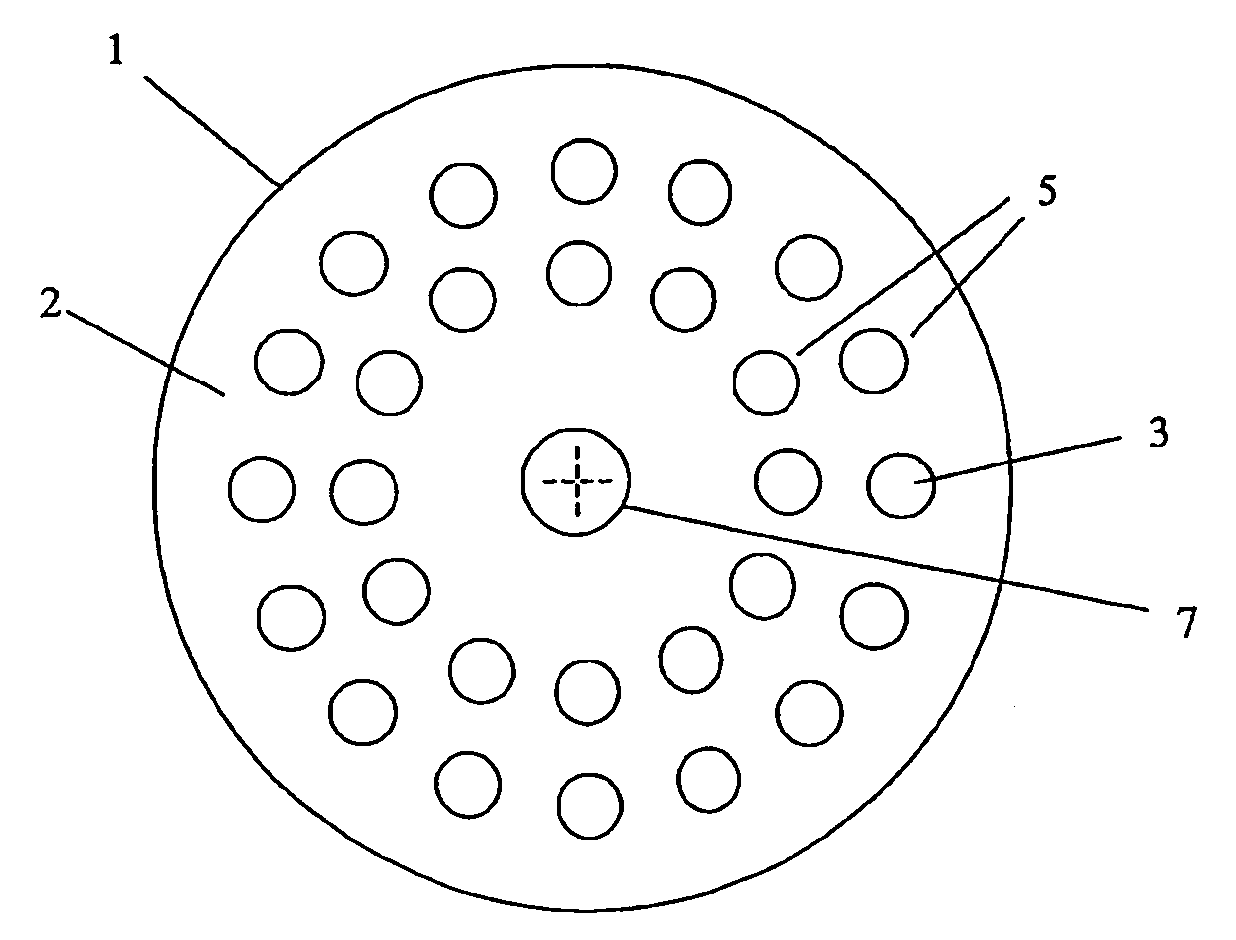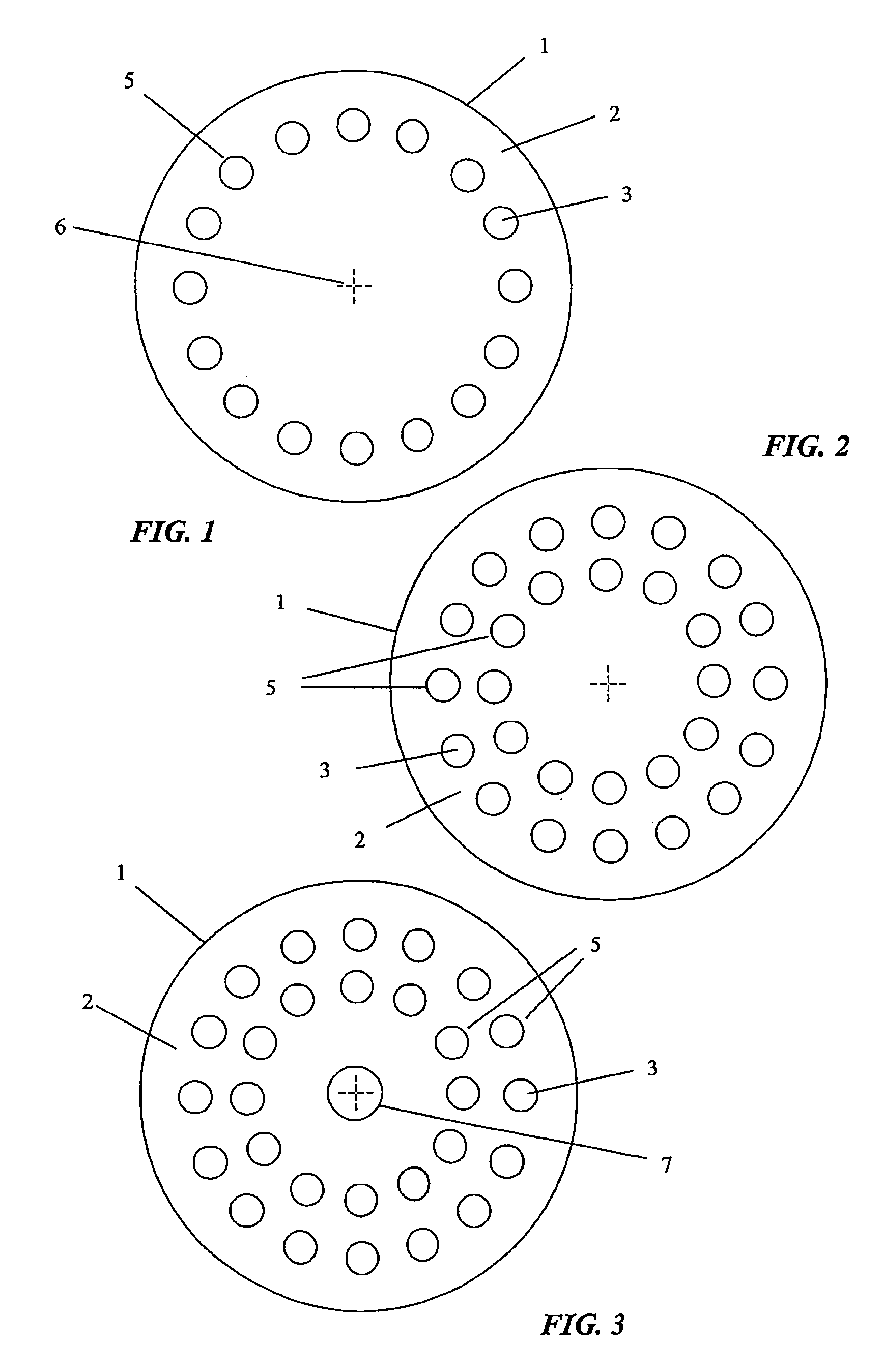Ring structures in optical fibres
a technology of optical fibres and rings, applied in the field of optical components, can solve the problems of reducing fringe contrast, polarisation of light in the fibre to fluctuate, and affecting the performance of optical fibres, and achieve the effect of high refractive index contras
- Summary
- Abstract
- Description
- Claims
- Application Information
AI Technical Summary
Benefits of technology
Problems solved by technology
Method used
Image
Examples
Embodiment Construction
[0016] Referring to the drawings, the invention provides an optical fibre 1 incorporating a body 2, and a plurality of longitudinally extending holes or inclusions 3 formed in the body. In the arrangement shown in FIG. 1, the holes are disposed in a circular array to define a ring structure 5 extending coaxially around a longitudinal axis 6 of the body of the fibre.
[0017] In one preferred configuration, the main body of the fibre is formed substantially from an optical polymeric material, and the inclusions 3 defining the ring structure 5 are substantially filled with air. Advantageously, this approach allows a relatively high refractive index contrast between the fibre material, which has a typical refractive index of around 1.5) and the entrained air, which has a refractive index of 1.0. It should be appreciated, however, that the inclusions may alternatively contain other materials, such as silica or polymers having different chemical compositions, densities or refractive indice...
PUM
 Login to View More
Login to View More Abstract
Description
Claims
Application Information
 Login to View More
Login to View More - R&D
- Intellectual Property
- Life Sciences
- Materials
- Tech Scout
- Unparalleled Data Quality
- Higher Quality Content
- 60% Fewer Hallucinations
Browse by: Latest US Patents, China's latest patents, Technical Efficacy Thesaurus, Application Domain, Technology Topic, Popular Technical Reports.
© 2025 PatSnap. All rights reserved.Legal|Privacy policy|Modern Slavery Act Transparency Statement|Sitemap|About US| Contact US: help@patsnap.com


